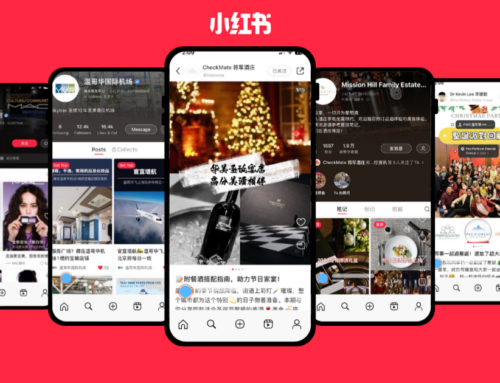Chinese New Year is coming up. Have you ever thought of doing business in China? Tapping into a market of 4 billion people is appealing for a lot of businesses, and it’s very lucrative for those who succeed. But there are many barriers to entry, cost being just one of them.
In this post, we’ll walk you through some of the pitfalls other brands have encountered when trying to enter the Chinese market – and explore ways that you can effectively market to Chinese people living here, in North America.
Brands who tried to make it in China (but failed)
There are many brands – including some well-known names – who have failed in their attempt to capture this market. Many of these failures were due to a lack of understanding of the nuances of China’s economy.
Here are a few notable examples:
Best Buy opened stores in China under the name Jiangsu Five Star Appliance in 2006, but they didn’t succeed in China because most Chinese consumers could get electronics for far cheaper and didn’t want to spend a premium on a name brand.
Groupon failed in the Chinese market as it couldn’t compete with the numerous other group-buying companies which already had an established market presence there. The brand overestimated its potential since its approach was novel in America (but common in China).
Home Depot also tried to enter the Chinese market but failed because Chinese citizens are more likely to hire someone to do home repairs rather than do it themselves due to lower labour costs. The American DIY culture of the brand didn’t resonate with Chinese audiences.
With so many pitfalls awaiting companies that decide to expand to Chinese markets, it may be better to market to millions of Chinese citizens in North America.
An alternative approach: market to Chinese audiences in North America
There are 5.4 million Chinese people living in the US, and 1.77 million Chinese people living in Canada. Many of these 7.2 million people use social media channels like WeChat, Weibo, and RED – presenting a unique opportunity for North American marketers to advertise products on channels that reach Chinese residents here, as well as in China.
With 1.32 billion active users, WeChat is one of the world’s largest social platforms. Marketers can use WeChat Channels to post ads with still images and video, similar to other social media platforms. And when a brand gets visibility on RED (Xiaohongshu), anywhere, it can truly pave the way for success.
But brand messaging still needs to be tailored to Chinese culture, especially if you’re launching a campaign on Chinese New Year.
Knowing how Chinese New Year is celebrated is key to a successful holiday campaign
Marketers targeting Chinese consumers in North America still need to ensure that campaigns are culturally sensitive. If you’re thinking about a Chinese New Year campaign, it’s important to consult with cultural experts to ensure you’re hitting the right note. That starts with a solid understanding of how Chinese New Year is celebrated.

For example, Burberry’s Chinese New Year ad depicts a fashion-forward family photo – but it was heavily criticized in China for being too dark for Chinese New Year.

https://twitter.com/eatcookexplore_/status/1614012238582501399
KFC Thailand also made a misstep with their Chinese New Year ad featuring incense sticks diffusing the aroma of KFC into the air – and also offending the Chinese community, who use incense for prayer, at funerals, and other special occasions. People who know how Chinese New Year is celebrated understand that incense isn’t always part of a more lighthearted celebration.
On the other hand, Nike’s ad hit the mark with its play on a tradition well-known to the Chinese community. During Chinese New Year, older generations traditionally give red envelopes with money inside to the younger generations. But it’s also traditional for younger generations to refuse the envelopes out of politeness before accepting them.
Nike’s ad shows the tradition of refusing the red envelopes taken to the next level, as a young person in Nike sneakers dodges a red envelope offered by an older relative.

Mercedez-Benz also created a successful campaign centered around red envelopes with the help of LAT Multilingual. They created an online-to-offline event on WeChat for Chinese New Year, with a digital “Wheel of Fortune” and physical red envelopes at the offline event, with a chocolate gold coin and good luck wishes inside for participants.
Looking beyond Chinese New Year: holistic marketing year-round
It’s worthwhile noting that most Chinese people living in North America also celebrate North American holidays like Christmas, too. Rather than creating campaigns exclusively on Chinese holidays, marketers aiming to win a Chinese audience in North America should make sure to create more diverse messaging around Western holidays, too.
If you’re looking to expand your understanding of the Chinese market in North America, we’re here to help! You can take our Golden Dragon training course to get your entire team up to speed on Chinese culture, digital trends, and marketing tactics – or reach out to LAT Multilingual for help translating and localizing your next campaign!















